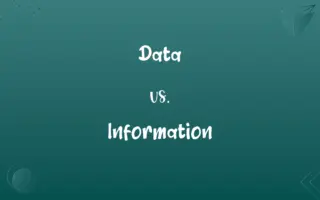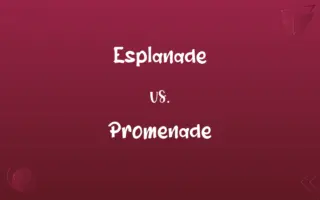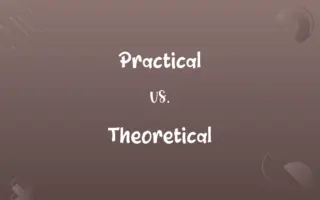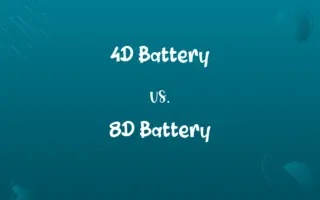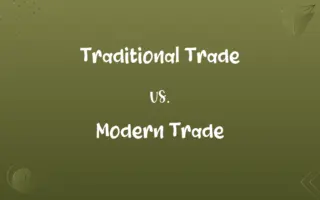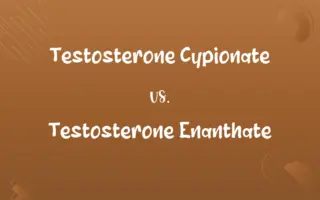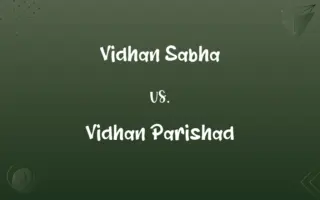Long-Term Scheduler in OS vs. Short-Term Scheduler in OS: Know the Difference

By Hifza Nasir & Dua Fatima || Published on March 5, 2024
Long-term schedulers regulate system load by controlling job entry; short-term schedulers manage CPU allocation to ready processes for efficiency.

Key Differences
The long-term scheduler, or job scheduler, decides which jobs or processes enter the ready queue, effectively controlling the degree of multiprogramming and influencing the system's overall load. The short-term scheduler, also known as the CPU scheduler, operates more frequently to allocate CPU time to processes in the ready queue, focusing on maximizing CPU utilization and process throughput.
Dua Fatima
Mar 05, 2024
The long-term scheduler determines the mix of I/O-intensive and CPU-intensive processes to maintain a balanced system workload, the short-term scheduler makes rapid decisions to ensure responsive process execution, often employing algorithms like Round-Robin or Shortest Job First for efficiency. The long-term scheduler's infrequent operation helps in maintaining a manageable number of processes for the system, whereas the short-term scheduler's frequent execution is crucial for achieving low process turnaround times and efficient CPU use.
Hifza Nasir
Mar 05, 2024
The long-term scheduler's role in system performance is more strategic, shaping the process landscape over time to prevent resource saturation. In contrast, the short-term scheduler plays a tactical role, responding dynamically to the current state of the system to optimize short-term performance metrics such as response time and throughput.
Hifza Nasir
Mar 05, 2024
The long-term scheduler have a lasting impact on the system's ability to balance resource demands, while the short-term scheduler's decisions are immediate, affecting the real-time operation of processes. This distinction underscores the complementary nature of these schedulers in managing system resources and process execution.
Dua Fatima
Mar 05, 2024
The long-term scheduler can be more selective, admitting or postponing new jobs based on system load, whereas the short-term scheduler must continually make quick decisions to ensure active processes are efficiently served, reflecting their different priorities in system management.
Hifza Nasir
Mar 05, 2024
ADVERTISEMENT
Comparison Chart
Objective
Control degree of multiprogramming
Allocate CPU time among ready processes
Dua Fatima
Mar 05, 2024
Decision Impact
Long-term system performance and workload balance
Immediate CPU utilization and process response
Shumaila Saeed
Mar 05, 2024
Algorithms
Often based on job characteristics
Round-Robin, Shortest Job First, etc.
Dua Fatima
Mar 05, 2024
ADVERTISEMENT
Long-Term Scheduler in OS and Short-Term Scheduler in OS Definitions
Long-Term Scheduler in OS
Strategic in maintaining system stability and efficiency.
Its role is crucial in long-term system resource management.
Shumaila Saeed
Feb 25, 2024
Short-Term Scheduler in OS
Employs algorithms for quick and efficient scheduling.
Using Round-Robin, it ensured fair CPU time distribution.
Hifza Nasir
Feb 25, 2024
Long-Term Scheduler in OS
Operates infrequently, shaping overall process flow.
Its decisions are made sparingly to manage system capacity.
Hifza Nasir
Feb 25, 2024
Short-Term Scheduler in OS
Allocates CPU time to processes, ensuring active management.
The short-term scheduler switched processes for optimal CPU use.
Dua Fatima
Feb 25, 2024
Long-Term Scheduler in OS
Manages entry of processes into the system, affecting load.
The long-term scheduler prevented overload by limiting active jobs.
Dua Fatima
Feb 25, 2024
ADVERTISEMENT
Short-Term Scheduler in OS
Tactically enhances system responsiveness and throughput.
Its actions directly impact process execution speeds.
Dua Fatima
Feb 25, 2024
Long-Term Scheduler in OS
Balances process types for optimal performance.
It ensures a mix of CPU and I/O jobs to avoid bottlenecks.
Hifza Nasir
Feb 25, 2024
Short-Term Scheduler in OS
Operates frequently to maintain high CPU utilization.
Its rapid decisions keep the CPU busy and processes flowing.
Hifza Nasir
Feb 25, 2024
Long-Term Scheduler in OS
Affects degree of multiprogramming by controlling admissions.
By admitting fewer jobs, it reduced the system's workload.
Hifza Nasir
Feb 25, 2024
Short-Term Scheduler in OS
Critical for minimizing process wait times and response.
Its efficiency resulted in lower process turnaround times.
Dua Fatima
Feb 25, 2024
Repeatedly Asked Queries
What is a long-term scheduler in an OS?
A long-term scheduler controls the admission of new processes into the system, managing the overall load and multiprogramming level.
Dua Fatima
Mar 05, 2024
How often does the long-term scheduler operate?
The long-term scheduler operates less frequently, making decisions that affect the system's workload and process mix over time.
Hifza Nasir
Mar 05, 2024
Can the short-term scheduler influence system throughput?
Yes, efficient scheduling by the short-term scheduler can significantly enhance system throughput and process completion rates.
Hifza Nasir
Mar 05, 2024
Can the long-term scheduler affect system performance?
Yes, by controlling the mix and number of processes, the long-term scheduler significantly impacts system performance and resource balance.
Shumaila Saeed
Mar 05, 2024
Are these schedulers present in all operating systems?
Most multitasking operating systems implement some form of both schedulers, but their complexity and behavior can vary widely depending on the OS design.
Hifza Nasir
Mar 05, 2024
Do both schedulers consider process characteristics?
Yes, but in different contexts: the long-term scheduler considers overall system load and process types, while the short-term scheduler focuses on execution characteristics for CPU scheduling.
Dua Fatima
Mar 05, 2024
What does a short-term scheduler do?
A short-term scheduler allocates CPU time to processes in the ready queue, focusing on maximizing CPU utilization and minimizing wait times.
Hifza Nasir
Mar 05, 2024
What algorithms might a short-term scheduler use?
Short-term schedulers might use algorithms like Round-Robin, Shortest Job First, or Priority Scheduling to efficiently manage process execution.
Dua Fatima
Mar 05, 2024
Is the long-term scheduler involved in process prioritization?
Indirectly, by selecting which processes enter the system, but it's the short-term scheduler that primarily manages process prioritization for CPU access.
Hifza Nasir
Mar 05, 2024
Can adjustments to the long-term scheduler affect the short-term scheduler?
Yes, changes in process admission and system load by the long-term scheduler can influence the operating conditions and decisions of the short-term scheduler.
Shumaila Saeed
Mar 05, 2024
Can the behavior of these schedulers be customized?
In many systems, particularly those designed for specific purposes, the scheduling policies and behaviors can be adjusted to meet unique performance or operational requirements.
Shumaila Saeed
Mar 05, 2024
How does the short-term scheduler improve process response?
By rapidly allocating CPU time to processes, the short-term scheduler minimizes wait times and improves overall process responsiveness.
Hifza Nasir
Mar 05, 2024
How do the two schedulers complement each other?
They work together to manage system load and ensure efficient process execution, with the long-term scheduler setting the stage for the short-term scheduler's more immediate decisions.
Dua Fatima
Mar 05, 2024
What happens if the long-term scheduler admits too many processes?
Overloading the system with too many processes can lead to resource contention and degrade overall performance, challenging the short-term scheduler.
Dua Fatima
Mar 05, 2024
How does the short-term scheduler handle priority conflicts?
It may employ priority scheduling, preempting lower-priority processes in favor of higher-priority ones to ensure critical tasks are completed timely.
Hifza Nasir
Mar 05, 2024
Share this page
Link for your blog / website
HTML
Link to share via messenger
About Author
Written by
Hifza NasirCo-written by
Dua Fatima














